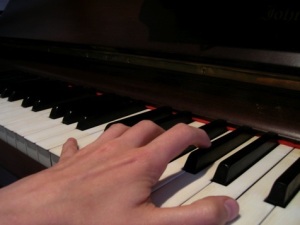
Physiologist Homer Smith cites skilled piano playing as one of the pinnacles of human achievement because of the “demanding muscle coordination of the fingers, which require a precise execution of fast and complex physical movements”. This remarkable human ability provides an insight into the power of the brain.
Consider Frédéric Chopin’s popular but challenging Fantaisie-Impromptu. This work requires playing approximately nineteen notes per second. The performer must learn these notes to such an extent that conscious attention to them is virtually no longer necessary. This is the aim of any playing of music—to render the technical demand to an almost unconscious level. Daniel Levitin says, “Plain old memorization is what musicians do when they learn the muscle movements in order to play a particular piece”. Much of this repetitive practice routine is more or less an algorithmic task. There’s nothing particularly creative about learning the motor mechanics of a phrase; if you repeat an action in a certain manner and for a sustained period of time, the brain faithfully will learn, and the muscles will obey.
I don’t mean to underestimate the physical demands of playing nineteen notes per second on the piano. Each finger requires at least two vertical movements as well as lateral ones. Each finger movement involves all three joints, and even motionless fingers are tensed, ready for action. Performing approximately 380 distinct motor actions per second, a skilled pianist can do all of this and still focus on the musicality of the work. This muscle count is calculated before we even get started on other muscular systems in the hands, arms, and shoulders. Further, each note must be timed and executed with an individual’s interpretative judgment, and when notes are played simultaneously, the fingers must differentiate volume levels for acoustic mixing of treble and bass, sometimes accentuating an inner melody. As if this were not enough, Fantaisie-Impromptu requires the mastering of polyrhythmic demands, meaning two rhythms occur simultaneously. Almost every bar requires the right-hand to play sixteen notes against the left-hand twelve. This is a far cry from ‘Rub your tummy while patting your head.’ Fantaisie-Impromptu is difficult but not as fearsome as some pieces in the literature of piano music. More complicated works have passages that require up to thirty notes or about six hundred muscle movements, per second, although this does seem to be the upper limit for muscle coordination. When it comes to complex muscle coordination, musicians – not footballers are the super athletes of the world!
Excerpts from ‘Learning Strategies for Musical Success’ by Michael Griffin. Reviews below.
“Terrific…eminently practical…excellent discussion…I came away inspired and excited, and I heartily recommend it.” – Inge Southcott, The Music Trust, Australia.
“This book really does deliver…a great resource on a piano pedagogy list…wonderful support for the teacher.” – Dr L. Scott Donald for American Music Teacher.
“A deeply impressive work, the breadth of research is fascinating! It is Griffin’s combination of his many years of practical experience as a music educator and consultant, with his broad overview of research and primary sources that makes this book so valuable and unique. A combination of big-picture theories and ideas with immediately practical strategies and examples.”
“Learning Strategies for Musical Success’ brings together recent developments in learning psychology and cognitive neuroscience and presents them in a very readable and engaging format. The strength of Griffin’s discussion lies in his clear explanations of the terminology as well as practical ways in which teachers can foster highly motivated, self-driven learners in both the classroom and private studio. This is a fascinating book, deserving of a wide readership. It provides clearly written explanations of a number of important developments in psychology and neuroscience, and articulates the benefits of music learning with convincing clarity. It’s a book to share with parents and senior students for the insights it provides on the benefits of sustained effort and perseverance –a message that can’t be heard often enough in our fast-paced, distracted, sound-byte-driven, contemporary society. Highly recommended.” – Dianne James, October, 2014 for Ritmico, New Zealand.
“Rarely do I come away feeling so inspired. Incredibly beneficial.” – Music Matters Blog
Amazon
Amazon UK
Kindle US
Kindle UK
Australia: Contact mdgriffin63@gmail.com for direct mail.
Also by Michael Griffin
‘Bumblebee: Rounds & Warm-ups for Choirs’
Second edition. Bumblebee! is more than just a wonderful collection of 130 choir exercises and rounds. The author shares timeless wisdom to help you get your choir – primary or secondary – into shape.
View Table of Contents.
“Will prove useful for almost everyone”- Rhinegold Music Teacher Magazine.
“This is a great resource to add to one’s library of rehearsal tricks.”- Anacrusis, ACCC, Canada
Modern Harmony Method: Fundamentals of Jazz and Popular Harmony (Third Edition, 2013) is a clear and well organised text suitable for students of arranging and composition, and for classically trained musicians wishing to grasp the beautiful logic of jazz harmony. Essential understandings include chord selection, voicing, symbols, circle of 4th progressions, extensions, suspensions and alterations. Included in the 107 pages are explanations, examples, exercises and solutions. The course can be started with students in year 9 and worked through to year 12 musicianship, composing and arranging. Available at Amazon.com
Music and Keyboard in the Classroom: Fundamentals of Notation is a unit of work for general music middle school classes. Designed around the mastering of practical skills, it integrates theory, aural and history, and allows students to progress at their own rate. View Table of Contents. “This has been a great buy; the books are just superb! Interesting topics with a wide range of pieces. Great content with clear progression of learning. Fascinating teaching philosophy! BRAVO!” -The Grieg Academy, London. Available at Amazon.com
Music and Keyboard in the Classroom: Let’s Get Creative! is the fun and creative extension to ‘Fundamentals of Notation’.
View Table of Contents. “We have been using your keyboard course and the results have been amazing!” – St George College, Australia
Available at Amazon.com

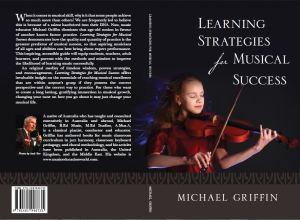

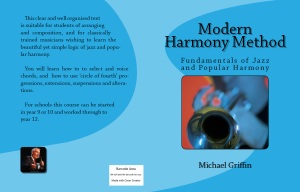
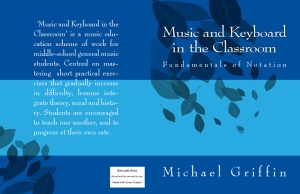
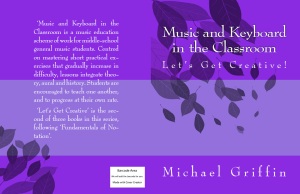
Reblogged this on UC MUSIC.
As a pianist, I must disagree with the author’s apparent premise that piano playing boils down to repetitive muscle “memory” until playing becomes sub-conscious. “[I]f you repeat an action in a certain manner and for a sustained period of time, the brain faithfully will learn, and the muscles will obey” seems to be an outside perception rather than a pianist’s take on things. From my experience, repetition over sustained periods of time does not automatically do the trick. On the stage, reliance on “muscle memory” is a phenomenal way to flop a performance. While I cannot articulate precisely what is required, an incredible level of conscious focus on playing is perhaps the most demanding aspect of live performance.
88keys, thank you for engaging in this conversation, however you have misrepresented the author. The content of what you read does not say it ‘boils down to repetitive muscle memory’ as you state. What this article does assert is that complex series of muscle movements require a degree of automation allowing one to focus on the expressive elements that transform notes into music. Repetition might not ‘automatically do the trick’ but repetition is how neural circuits are strengthened (myelinated). This is a fundamental requirement to master dexterous muscle movements.
What about organists? They do all that with their hands, but with more finger independence required for holding certain notes longer than others. Plus, they play another 2.5 octave keyboard with their feet. So it would seem to me that organists are the real athletes…
As a pianist, I’m forced to agree. Organists amaze me.
Dear author, do some research into the pipe organ, and then reevaluate what you think the most athletically demanding instrument is.
Yes, I am full of admiration for what organists have to co-ordinate with the extra demands of multiple manuals, stops and pedals. Perhaps the degree of finger sensitivity required to control dynamics is a point of differentiation in favour of pianistic complexity. What do you think?
As an organist you full well need to control your touch as on the piano, only the degree to which it is audible is different. One of the golden rules about organ playing I like to cite is: “On the piano, the quality of the tone is determined by how you hit the key. On the organ, it is determined by how you release the key.”
Your argument sounds a bit as if Organists can get away with just hitting the keys somehow, while pianists have to do so with more care. That does apply to bad organists, but not to the good ones.
And if you go into late romantic organ repertoire, you certainly find note-counts that surpass the ones you mentioned for the piano.
Not that I really think that it matters so much, but I think we organists need to have our voice heard 😉
Agree with Adaham here. This was a big surprise for me as a pianist messing around on an organ. Pianists have to control dynamics with their fingers, but the organist has to think as much about note release as about pressing the key in the first place. In a way, they don’t just play notes, they actively play the rests as well. Of course, it’s not ENTIRELY like this, but as a pianist, it’s somewhat the case that my responsibility for the note ends after I hit the key. Organists have to remain consciously responsible for the sound for its entire lifetime.
Again, it’s not COMPLETELY like that — any musician is effectively responsible for all noises their device makes in the end. But coping with the “strike” versus “press/release” relationship to the keys for pianists vs organists was challenging for me. Pressing the keys for an organ has more in common with a clarinet, only thankfully they don’t have to blow air into it to make the noise. 🙂
In the end, I think any instrument challenges us as much as it can, as long as we’re open to it doing so. Make an instrument easier to manipulate, and it just raises the bar for what’s considered virtuoso play. Nowdays, after the career and death of John King, even ukuleles have become virtuosic.
so why aren’t we PAID like super atheletes??
[…] Podéis leerlo pinchando aquí. […]
Why aren’t pianists paid like super athletes? Some are: Elton John, Billy Joel, Liberace, Donald Fagen, Peter Gabriel, Barry Manilow are or were all mega-millionaires. The distribution is somewhat akin to how many people make a living at professional sports vs how many people play sports generally. A small minority of musicians are able to make a living at it, and an even tinier minority make a tremendous amount of money. Another reason that pianists aren’t paid like athletes should be obvious: music is not a competitive sport for large audiences that can be monetized. Even piano competitions are really judging affairs; there is no definitive winning; an audience member wouldn’t be able to keep score. Another reason: the common perception of what “athletic” means does not include playing piano.
It’s a fun article, but reminds me of the saying if all you have is a hammer, everything looks like a nail. I would be interested to see, out of the thousands of musical instruments in the world, how many were evaluated for “athletic ability”. Chopin’s Fantaisie-Impromptu is cited; if Chris Thile worked up an arrangement for mandolin, would he be considered “athletic”?
Fun, but silly.
Thanks for your comments. I am interested that you found the article ‘fun but silly’. It wasn’t written to be ‘fun’ but to examine the physical process that must be mastered in pianism. It does however deliberately poke fun at and stir the sporting world, arguing implicitly that the heroic muscular feats of musicians deserve at least a small portion of the adulation and kudos afforded sports celebrities. What is silly about that?
Pianists are terrific and so are violonists! In my opinion however, saying that pianists are – in other words – the best ever performers,
A: discounts MANY factors, skills and abilities that other musicians or singers, dancers have to face and use in every millisecond,
B: is like comparing oranges to apples, and
C: boosts an unnecessary feel of “Who is best?” kind of race amongst artists or lovers of artistic fields
Speaking of singers, we need to
– be in top shape physically and mentally when we perform or practice,
– coordinate breathing+muscles in the throat and the surrounding body parts+vocal chords+posture and body movement+facial expression+volume+speed+emotion+message of the song, sometimes in a foreign language+pronunciation of the words+communication with the audience and musicians+clever usage of our stamina
– overcome dusty/smokey/dry/hot/cold/oxygen depleted, etc air and we can,t even cough/sneeze/burb/sniff
Did I miss something?
And we don,t have black and white keys or ANYTHING AT ALL to help us always hit the right pitch. How about an acapella solo, an opera aria?
Plus we normally do the whole show standing on our feet or even dancing.
Which leads me to other species, as an example, that might just as well earn the “Super-Athletes of the World” title: there are certain types of dancing – see Hungarian folk dance – where you need to
– combine heavy physical strength and incredible stamina with flexibility and very precisely elaborated movements of your ENTIRE body when each part will do their own work, differently from each other,
– keep your rhythm to the music,
– be in synch with the dynamics of your partner or a whole group,
– be perfectly aware of your ever-changing location in space and be always in the exact spot required by the choreography,
– if this is not enough, you also need to SING on top of these – often without ANY amplification, loud enough because the audience in the last row must hear you!
– and do this all with clothing on you that is maybe one/third of your body weight and often super-uncomfortable, you can hardly breath in it.
Sooo… this study is very interesting for sure, but what is the point in making a comparison between trapeze acrobats, figure skaters, divers, ski jumpers, fencers or other sportsmen where you make one wrong move and you might be dead in the next minute or crippled for life, and between pianists or other musicians which is a totally different field of game? See pont B above.
And IF such a comparison would be warranted, why pianists and why not some others that do a physically more challenging job? You see, this whole subject just brings up my point C above, so easily… Why would we need that?
Dear Andrea
Thank you for your comments, I appreciate your thoughts. However, you have missed the point of this article. It does not say as you suggest that ‘pianists are the best performers’. What I examine is sequenced co-ordinated muscular movement. The fact that from this perspective pianism is particularly demanding is a fact. Various instruments have specific difficulties to overcome. This article does not compare (as you do) – it merely offers an insight into what the brain has to deal with on one instrument -the piano. This is important because such knowledge of the complexities of movement inform practice techniques. Playing at fast tempi requires a degree of automation, and this is obtained through slow, portioned, varied repetition. This article also attempts to further understanding of what it takes to be a musician -particularly in sport-mad countries like mine where musicians are under appreciated.
You say ‘some others do a more physically demanding job’. Who and what? You need to be more specific. This article refers to ‘complex muscle coordination’ and argues that (with the possible exception of organists) nothing is as demanding from this perspective. I hope this now clear.
Came back: my comments from yesterday does not show yet, and in the meantime I also changed my viewpoint a little bit. Here is what I have to say, in my blog: http://www.andreagerak.com/blog/who_are_the_super_athletes_of_the_world
“Physiologist Homer Smith cites skilled piano playing as one of the pinnacles of human achievement.”
Ssssssh, don’t tell the violinists. They still think our instrument is “easy.” 🙂
Reblogged this on the universal language of music.
[…] Pianists as super-athletes […]
Extremely interesting. I do think that first rate pianists are also thinking about release (although it is a little different) and often for different aesthetic reasons, the great late Mack Jost and Mac Cook were great advocates of this and of how the release can affect your next appointment with the keyboard in the phrase or new phrase. Yes the organ is complex coordination indeed.
The athlete analogy is only applying to muscle coordination of course we should remember out of respect and not to aerobic fitness where we must hugely acknowledge many athletes superiority.
Finger legato and silent changes so critical for perfect legato incidentally I lament is often so absent in many young pianists whose teachers have clearly not known
or stressed this.
Top class drum kit players and percussionists too are also doing amazing things with muscle coordination of legs(especially if a double bass drum pedal) feet, arms, wrists, hands and sometimes fingers. E.g. Tabla.
Best to all
Reblogged this on Dagmar Feyen.
[…] I like this one, too. Now, I don’t really think that any one instrument is “harder” than any […]
[…] musical skills needed, and these motor skills are only acquired through extensive practice. Like athletes. And my teaching style is a very introvert one: I am more at ease with one or two students, than […]